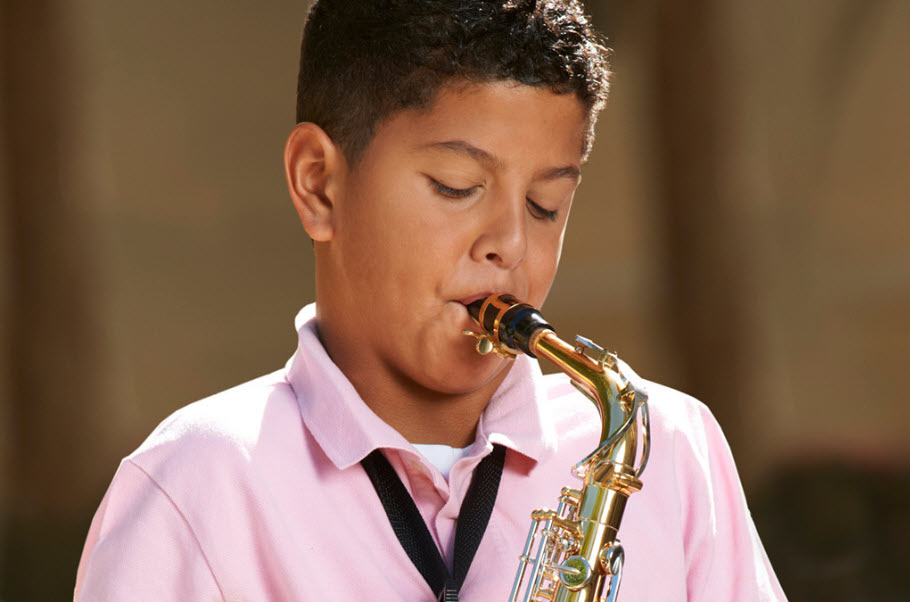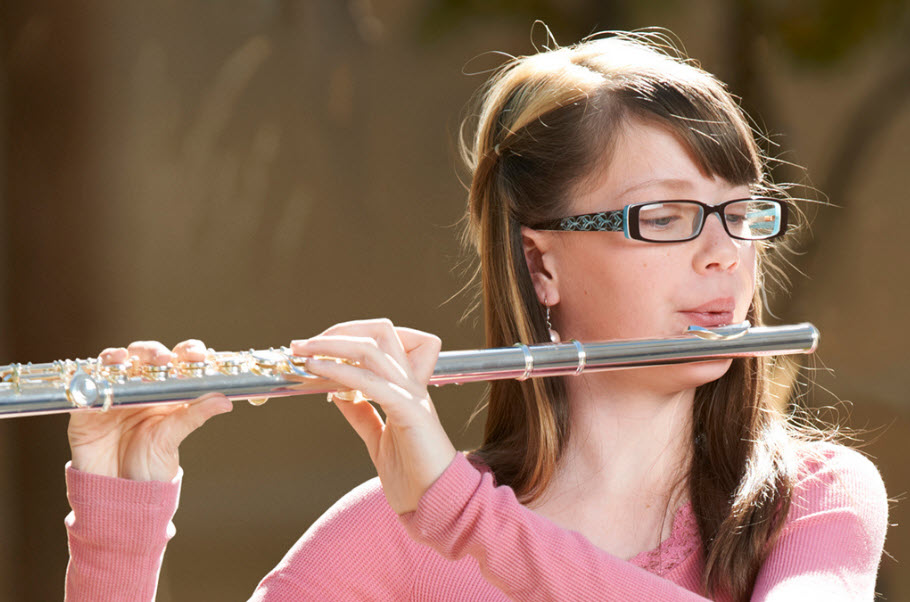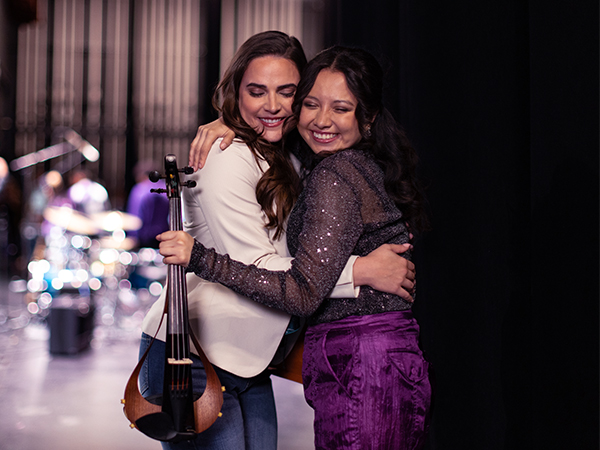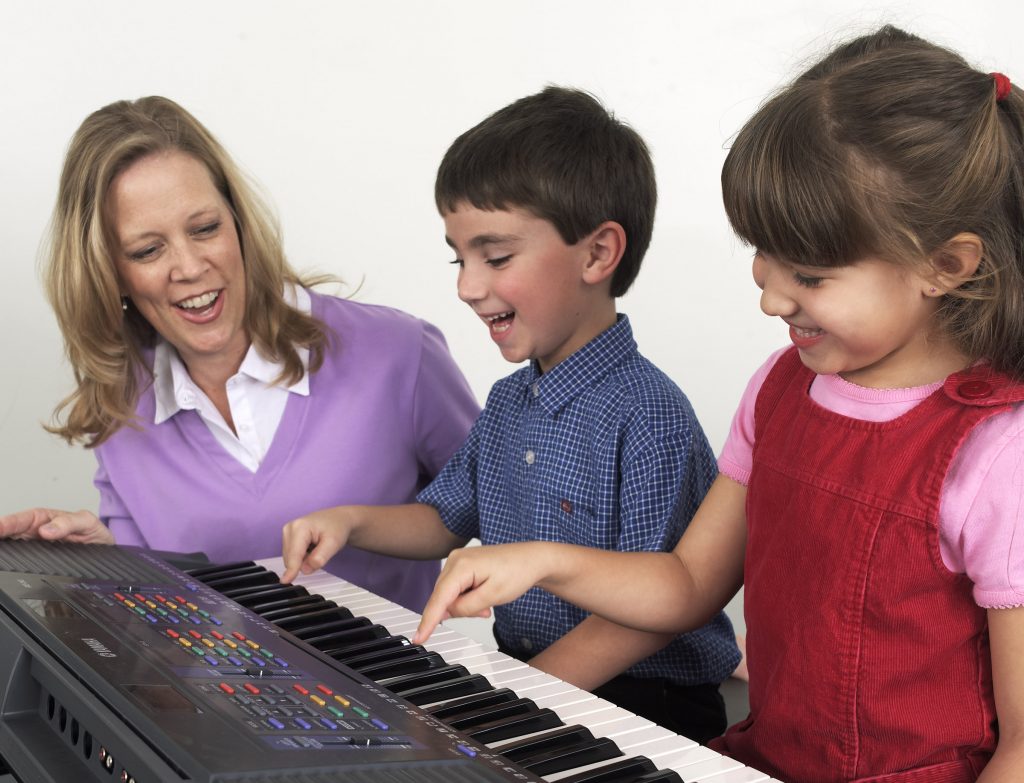So Your Child Wants to Play a Woodwind
Here’s what you need to know to get your son or daughter started on saxophone, clarinet or flute.
Your child has come home with a flyer with options for them to join the school band, and they are beaming with joy at the prospect of being able to make their own music with a saxophone, clarinet or flute. The only problem is, you don’t know what you need to do to get your kid started.
If you’re looking for the most important information to know when selecting a woodwind instrument for your son or daughter, you’ve come to the right place.
Note: It’s true that there is a whole world of woodwinds out there like the oboe, bassoon and the small but mighty piccolo. However, the saxophone (both alto and tenor versions), clarinet and flute are the three woodwinds most commonly used by schools at the beginning band level, so for the purposes of this article, we’ll focus on those three.
Saxophone

In school bands, the most common types of saxophone are tenor sax (the bigger version with an “S” curve in the neck) and alto sax (the slightly smaller version, with a neck that has just one bend). There are five basic parts to every saxophone:
1. The reed. This is what gets the sound going as it vibrates by virtue of air being blown over it.
2. The ligature. This holds the reed.
3. The mouthpiece. This is where the reed is secured so that its vibrations can be translated to the rest of the instrument.
4. The neck. This connects the mouthpiece to the body.
5. The body. This is the largest, shiny part where the hands are placed.
Your child’s first rental or purchased saxophone will more than likely come with all these parts. The only additional piece of equipment needed is a neck strap, which hooks onto a special ring on the body of the sax and helps to keep the instrument upright while it’s being played.
The most important priorities for a young student starting on the saxophone are the same as for most wind instruments:
1. Response. How easily they can make a sound;
2. Intonation. How closely that sound aligns with a pitch set by their instructor; and
3. Tone. How well they can create the instrument’s characteristic sound.
At the beginning, the musical journey for many can be frustrating, so an instrument that can consistently be played without a ton of upkeep can help smoothen the road ahead. A good choice for kids starting out is the YAS-26 Standard Alto Saxophone or the Yamaha YTS-26 Standard Tenor Saxophone, though the ambitious player may already be setting their eyes on intermediate models such as Yamaha 300, 400 or 500 Series saxes.
Clarinet

There are several parts to the clarinet:
1. The reed. The source of the vibration when blown across.
2. The ligature. This stabilizes the reed in one place.
3. The mouthpiece. This houses both the ligature and the reed and connects them to the instrument.
4. The barrel. This connects the mouthpiece to the body.
5. The upper body, where the top stack of keys are attached.
6. The lower body, where the bottom stack of keys are attached.
7. The bell. This is the flare at the bottom of the instrument.
The bodies of most entry-level clarinets (such as the Yamaha YCL-255) are made from an ABS resin, known for its extreme strength and resistance to variations in humidity, although some are made of hardwood like grenadilla. ABS resin is usually the best option for beginners due to its durability and relative ease in maintenance. Although there are various fingering variations for the clarinet, most beginning instruments (such as the YCL-255) feature the Boehm fingering system standard in American classrooms.
In most school bands, there will be just one type of clarinet: the B♭ (B flat) clarinet. This instrument is a great starting place for young reed players as it’s common in elementary musical literature all the way through Mozart’s finest concertos. Like other woodwinds, the most important thing for beginning clarinetists is that they be able to make a sound and keep it in tune, with a tonality similar to the other clarinets in the school band.
Flute

The flute has a clear and bright character with a sweetly distinctive sound that has floated atop bands, orchestras and all types of musical ensembles for centuries. It has just three main parts: the headjoint, the body (sometimes called the “main tube”) and the footjoint. A flute produces its characteristic sound via air blown across a lip plate, which creates a standing vibration that then gets passed into the rest of the instrument. The player can then open and close keys to raise and lower the pitch; these also can be used for changing tonality.
It usually takes some time for beginning flute players to be able to consistently make their first sound on the instrument. To the outside observer, it can look awe-inspiring to see breath be transformed so directly into sound. (Here’s a detailed explanation of how this works.)
An important consideration for the beginning flutist is key type: Open-holed or closed-holed? In-line keys or offset keys? Open-holed flutes have holes in the keys. These provide the player with nuance and control over the sound, but may present the beginner with challenges in closing the holes, especially if they have small hands and fingers. If a young student has an open-holed flute and is frustrated with not being able to close the holes, key caps, which are included in most open-holed models, are a great option to fill in the keys until the student has achieved a level of proficiency. Most “standard” (beginner) flutes, like the Yamaha YFL-222, come with an “Offset G” or offset keys, meaning that the keys are designed with a slight non-linear layout so they better fit the natural curve of the fingers. Offset keys are recommended for nearly all beginning flutists.
Priorities for the beginning flute student are similar to those of other wind instruments: how easily one can produce a sound, how closely that sound can match the pitch of the class, and how closely that sound can match the tone or character of their fellow bandmates. The most important consideration for young flutists is that they be equipped with an instrument that feels comfortable. Don’t be afraid to ask your child what they think of the instrument in their hands.
Whichever instrument your child decides to pursue, remember that your local authorized Yamaha dealer is an excellent source of information. Setting your child up for success can lead to years of musical satisfaction down the road.
Check out these related blog articles:
A Guide to Parent Resources for Beginning Band and Orchestra
Beginner’s Guide to the Saxophone
Five Saxophone Facts You May Not Know
Five Things You Never Knew About the Clarinet
Click here for more information about renting a band instrument, and band in general.
Click here for more information about school music.
Click here for more information about Yamaha saxophones.
Click here for more information about the Yamaha YCL-255 Standard Clarinet.
Click here for more information about the Yamaha YFL-222 Standard Flute.
Click here to locate your local authorized Yamaha dealer.














